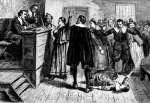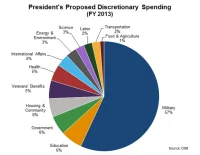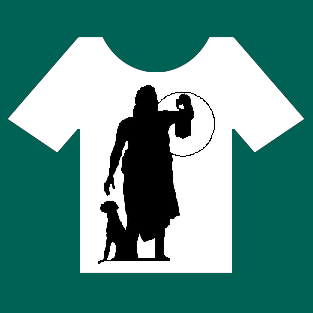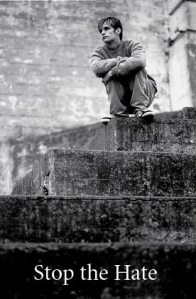On this date [the year to Salemites was 1691, since the new year began on March 25 in those days] in Salem Village in the Massachusetts Bay Colony (present-day Danvers, Massachusetts), Abigail Williams, age 11, and Elizabeth Parris, age 9, began having “fits” involving behavior such as blasphemous screaming, convulsive seizures, trance-like states, and mysterious spells. Soon Ann Putnam, Jr., age 11, Mercy Lewis, age 17, Mary Walcott, also age 17, and other Salem girls began acting similarly.
So began one of the most famous travesties of justice in history – the Salem Witchcraft Trials. The proceedings were notable for their lack of empirical reason, skepticism, and humanitarianism; they were instead based on superstition, ignorance, fear, and intolerance.

The Witch House, the home of Magistrate Jonathan Corwin in 1692.
In mid-February, unable to determine any physical cause for the symptoms and dreadful behavior, the physician William Griggs concluded that the girls were under the influence of an “Evil Hand” – Satan. Under pressure from the Reverend Samuel Parris and magistrates Jonathan Corwin and John Hathorne to identify the source of their affliction, the girls named three women as witches: Tituba, the Parris’ Caribbean slave; Sarah Good, a homeless beggar; and Sarah Osborne, an elderly impoverished woman. On February 29, warrants were issued for their arrests.
Over the following weeks, other townspeople came forward and testified that they, too, had been harmed by or had seen strange apparitions of some of the community members. By the end of the witch hunt, more than 200 people had been accused of practicing witchcraft – the “Devil’s magic.”
To try the witchcraft cases, Governor William Phips on May 27, 1692 ordered the establishment of a Special Court of Oyer (to hear) and Terminer (to decide) for Suffolk, Essex, and Middlesex counties. The seven magistrates of this court based their judgments and evaluations on various kinds of intangible evidence, including direct confessions (some the result of torture), supernatural attributes (such as “witchmarks”), and especially the reactions of the “afflicted” girls. The latter involved spectral evidence, the appearance of the accused’s apparition or “specter” to an “afflicted” girl, and the test of touch, the sudden cessation of her fit after being touched by the accused witch. Spectral evidence was based on the assumption that a witch could send out his/her specter, an incorporeal being indistinguishable to those who could see them from the witch himself/herself. The specter had human powers of sight, hearing, speech, and touch and superhuman ones of locomotion, so it could torment and afflict the “saints” to lead them astray. The touch test was based on the assumption that the girl was made well by physical contact with the witch because it allowed the witch’s evil to flow back from the “afflicted” girl.
English courts, while recognizing the credibility of “spectral evidence,” refused to prosecute alleged capital offenses on the basis of “spectral evidence” alone. That was not the case in New England. During the witch trials the “afflicted” girls claimed that various people of Salem Town and Salem Village had appeared to them to lead them into witchcraft and to cast spells upon them. Furthermore, the girls claimed to see “specters” even in the courtroom. The magistrates accepted such evidence as credible and admissible for judgment and sentencing. Thomas Brattle described the court procedure in a letter he wrote (see below) to the General Court of Massachusetts in October:
First, as to the method which the Salem Justices do take in their examinations, it is truly this: A warrant being issued out to apprehend the persons that are charged and complained of by the afflicted children, (as they are called); said persons are brought before the Justices, (the afflicted being present.) The Justices ask the apprehended why they afflict those poor children; to which the apprehended answer, they do not afflict them. The Justices order the apprehended to look upon the said children, which accordingly they do; and at the time of that look, (I dare not say by that look, as the Salem Gentlemen do) the afflicted are cast into a fitt. The apprehended are then blinded, and ordered to touch the afflicted; and at that touch, tho’ not by the touch, (as above) the afflicted ordinarily do come out of their fitts. The afflicted persons then declare and affirm, that the apprehended have afflicted them; upon which the apprehended persons, tho’ of never so good repute, are forthwith committed to prison, on suspicion for witchcraft….

Gallows Hill
The first case brought to the special court was Bridget Bishop, an older woman known for her gossipy habits and promiscuity. She was tried on June 2 and, on June 10, became the first person hanged on what eventually became known as Gallows Hill. Troubled by this event, Governor Phips consulted the ministers of Boston, including Increase Mather and his son, Cotton. They wrote the Return of the Ministers Consulted, in which they advised caution in the witchcraft proceedings but concluded:
Nevertheless, we cannot but humbly recommend unto the Government the speedy and vigorous prosecution of such as have rendered themselves obnoxious, according to the direction given in the laws of God, and the wholesome statutes of the English nation, for the detection of witchcrafts.
Five people were sentenced and hanged in July, five more in August and eight in September. One accused witch (or wizard, as male witches were often called) was pressed to death on September 19 because he refused to enter a plea to the charges of witchcraft against him. On October 3, after 20 people had been executed in the Salem witch hunt, the Reverend Increase Mather, who was the father of Cotton Mather and then president of Harvard College, delivered a sermon entitled Cases of Conscience concerning Evil Spirits Personating Men, in which he denounced the use of spectral evidence – the girls’ visions – and said:
It were better that ten suspected witches should escape than one innocent person be condemned.
On October 8, 1692, Thomas Brattle, a merchant, mathematician, astronomer, and Fellow of the Royal Society, wrote an eloquent letter (quoted above) criticizing the witchcraft trials and convictions to the members of the General Court. This letter and Increase Mather’s Cases of Conscience apparently had great impact on Governor Phips, who on October 12 prohibited further imprisonments for witchcraft. On October 26, the General Court dismissed the Court of Oyer and Terminer, and on October 29, the Governor formally dissolved it. On November 25, 1692, the General Court created the Superior Court of Judicature to try the remaining witchcraft cases, but spectral evidence was now disallowed. This time, only 3 of 56 defendants were condemned, and Phipps pardoned them along with five others awaiting execution. In May 1693 Phips pardoned all those who were still in prison on witchcraft charges. They were free – provided they could pay their jail bills.
On August 25, 1706, Ann Putnam, Jr. publicly apologized in Salem Village Church for causing the deaths of innocent people and said it was due to a “great delusion of Satan.” Eventually, the colony admitted the trials were a mistake and compensated the families of those convicted. However, Massachusetts did not formally apologize for the events of 1692 until 1957 – more than 250 years later.
The tragic events in Salem Village in 1692 clearly illustrate why alleged supernatural entities or forces are no longer admissible in legal proceedings as evidence of the guilt or innocence of the accused. The Enlightenment, beginning in the late 1680s, contributed to the end of witchhunts throughout Europe and America by pointing out that there was no empirical evidence that alleged witches caused real harm and by emphasizing that the use of torture to force confessions was inhumane. The Enlightenment also resulted in replacing superstition with science, which does not use supernatural entities or forces to explain natural phenomena – such as the bizarre behavoir of Abigail Williams and Elizabeth Parris.
References:




























You must be logged in to post a comment.